the story of the three little pigs pdf
The timeless tale of ‘The Three Little Pigs’ originated in traditional European folklore, published in 1890 by Joseph Jacobs. It features three pigs outsmarting a hungry wolf, teaching lessons on prudence. The story’s PDF version, available under Project Gutenberg, offers an accessible and visually enhanced reading experience for all ages.
1.1 Overview of the Story
The story of the three little pigs is a classic European folktale about three pigs who leave home to build their own houses. The first two pigs, being lazy, build houses of straw and sticks, which are easily destroyed by a hungry wolf. The third pig, who is hardworking, builds a strong brick house that withstands the wolf’s attacks. The tale emphasizes the importance of preparation and hard work. Available as a PDF, this story, originally published by Joseph Jacobs in 1890, features vivid illustrations and remains a popular educational tool for children.
1.2 Historical Background
The story of the three little pigs has its roots in traditional European folklore, with its most well-known version published by Joseph Jacobs in 1890. Jacobs included it in his collection of English fairy tales, where it gained widespread popularity. Over time, various adaptations have emerged, including versions where the younger pigs survive the wolf’s attacks. The tale has been passed down through generations, with its core message of hard work and preparation remaining intact. Today, the story is available as a free PDF, such as L. Leslie Brooke’s version under the Project Gutenberg License, ensuring its accessibility to readers worldwide.
1.3 Popularity and Cultural Impact
The story of the three little pigs has become a timeless classic, captivating audiences for generations. Its universal themes of hard work, preparation, and survival have made it a staple in children’s literature. The tale has been adapted into numerous films, TV shows, and stage plays, further cementing its cultural significance. The availability of the story as a free PDF, such as the version by L. Leslie Brooke, has made it easily accessible to readers worldwide. Its enduring popularity also extends to merchandise, music, and even educational materials, solidifying its place in global culture and entertainment.
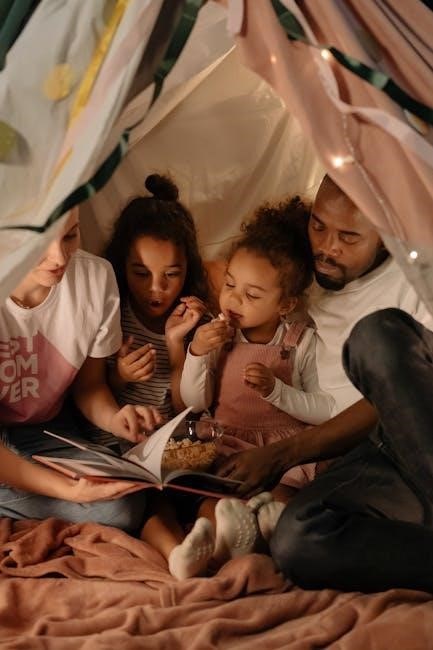
The Original Storyline
The story follows three little pigs who leave home to build their lives. They encounter a big bad wolf who tries to blow down their houses.
2.1 The Three Little Pigs and Their Mother
The story begins with three little pigs living with their loving mother. She teaches them valuable life lessons before they set out on their own. Each pig has a distinct personality, reflecting different approaches to life. The mother, wise and caring, encourages them to explore the world and build their futures. This heartfelt beginning establishes the pigs as relatable characters, preparing readers for their adventures. The mother’s guidance serves as a foundation for their journey, emphasizing the importance of wisdom and preparation.
2.2 The Decision to Build Houses

After leaving their mother, the three little pigs decide to build their own houses. This decision marks the beginning of their independence and sets the stage for their encounters with the Big Bad Wolf. Each pig chooses materials based on their priorities and resources. The first pig opts for straw, the second for sticks, and the third for bricks. This choice reflects their differing attitudes toward hard work and preparation. The decision to build houses is a pivotal moment, showcasing their individual characteristics and foreshadowing the challenges they will face.
The Big Bad Wolf is introduced as the main antagonist in the story, symbolizing cunning and danger. His character serves to test the preparedness and wisdom of the three little pigs. With a menacing reputation, the wolf seeks to exploit the pigs’ vulnerabilities. His introduction sets the tone for the conflict, highlighting the importance of the pigs’ decisions regarding their houses. The wolf’s presence adds suspense and tension, making him a pivotal figure in the narrative. His actions drive the story forward, leading to the eventual showdown with the third little pig.
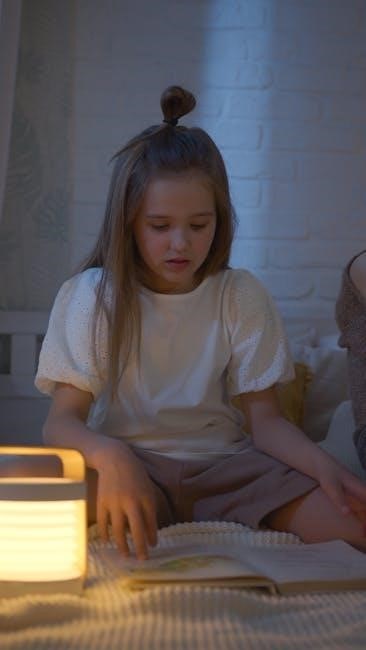
The Construction of the Houses
The three little pigs build houses using straw, sticks, and bricks, each reflecting their varying levels of effort and foresight in preparation for potential threats.
3.1 The First Little Pig and the Straw House
The first little pig, eager to build quickly, chooses straw as his material. The straw house is constructed fast but lacks strength. The pig’s haste and lack of foresight lead to a fragile structure. When the Big Bad Wolf arrives, he effortlessly blows the straw house down. This event highlights the consequences of poor planning and the importance of preparation. The pig narrowly escapes, learning a valuable lesson about the need for stronger foundations. This part of the story emphasizes the theme of hard work and its relationship to safety and security.
3.2 The Second Little Pig and the Stick House
The second little pig, slightly more ambitious, builds his house with sticks. While sturdier than straw, it is still not strong enough to withstand the Big Bad Wolf. The wolf huffs and puffs, easily blowing down the stick house. The second pig narrowly escapes and joins his brother in the brick house. This part of the story teaches that while some effort is better than none, it is not enough to ensure true safety. The pig learns that shortcuts and mediocre preparation lead to vulnerability and danger.
3.3 The Third Little Pig and the Brick House
The third little pig, determined to avoid his brothers’ fate, builds a sturdy brick house. He spends extra time and effort gathering materials, ensuring his home is strong. When the Big Bad Wolf arrives, he huffs and puffs but cannot blow down the brick house. This part of the story highlights the importance of hard work, preparation, and using quality materials; The third pig’s foresight saves him and his brothers, proving that diligence leads to safety and success. The brick house becomes a symbol of wisdom and long-term thinking.
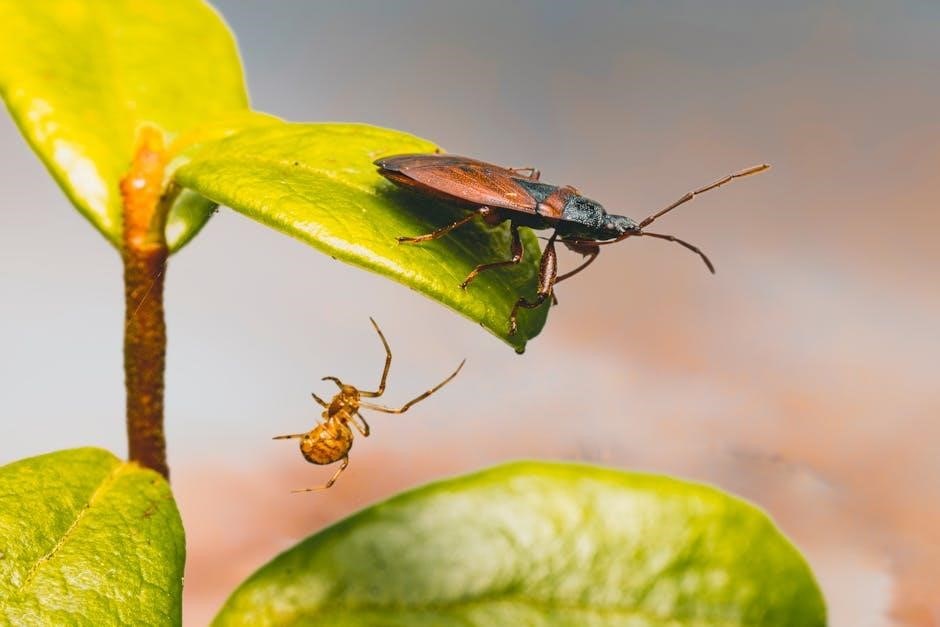
The Wolf’s Attacks
The Big Bad Wolf targets the three little pigs, determined to eat them. He systematically attacks each house, testing their strength and the pigs’ resolve.

4.1 The Wolf Blows Down the Straw House
The Big Bad Wolf, with a huff and a puff, easily blows down the straw house of the first little pig. The fragile structure collapses instantly, leaving the pig terrified and fleeing for safety. This event highlights the wolf’s cunning and the pig’s poor preparation. The wolf’s successful attack emphasizes the importance of building strong foundations, a key moral lesson in the story. The first little pig narrowly escapes and seeks refuge with his brother, setting the stage for the wolf’s next challenge.
4.2 The Wolf Blows Down the Stick House
The Big Bad Wolf, determined to catch the second little pig, targets the stick house. With a louder huff and a stronger puff, the wolf blows down the stick house, which collapses under the pressure. The second pig barely escapes and joins his brother in the brick house. This event showcases the wolf’s relentless pursuit and the pigs’ growing fear. The stick house, while sturdier than straw, still proves no match for the wolf’s might, emphasizing the importance of stronger preparation and foresight.
4.3 The Wolf’s Failure to Blow Down the Brick House
The Big Bad Wolf, determined to eat the pigs, targets the brick house. He huffs and puffs with all his might, but no matter how hard he tries, he cannot blow down the sturdy brick house. The three little pigs, safe inside, celebrate their cleverness and hard work. The wolf, exhausted and humiliated, gives up and leaves. This final confrontation highlights the importance of preparation and wisdom, as the brick house stands strong against the wolf’s attacks, ensuring the pigs’ safety and victory.
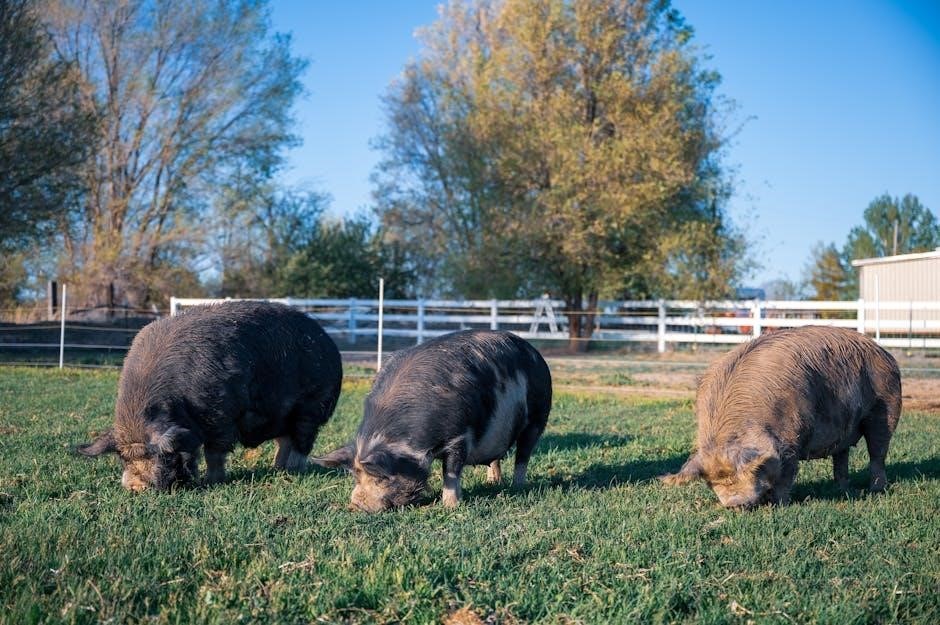
Moral Lessons and Themes
The story teaches valuable lessons about hard work, preparation, greed consequences, and unity. It emphasizes that diligence and wisdom lead to safety and success.
5.1 Hard Work and Preparation
The story underscores the importance of hard work and preparation through the third little pig’s diligence. Unlike his brothers, who hastily built houses of straw and sticks, the third pig invested time and effort into constructing a sturdy brick house. His foresight and perseverance ultimately saved him from the wolf’s attacks. This teaches children that preparation and hard work are essential for overcoming challenges and ensuring safety. The PDF version of the story vividly illustrates this moral, reinforcing the idea that shortcuts often lead to failure, while dedication yields lasting success.
5.2 Greed and its Consequences
The story highlights the consequences of greed through the actions of the first two little pigs. Their desire for quick, easy solutions led them to build houses of straw and sticks, prioritizing speed over safety. This greed and laziness made them vulnerable to the wolf’s attacks. The PDF version emphasizes how their shortcuts led to destruction, teaching children that prioritizing ease over quality can have dire consequences. The moral lesson is clear: greed and impatience often lead to failure, while diligence and wisdom ensure long-term success and security.
5.3 Unity and Family Support
The story underscores the importance of unity and family support, as the three little pigs ultimately survive by helping one another. After the wolf destroys the first two houses, the brothers seek refuge with the third pig, who welcomes them. Together, they withstand the wolf’s final attack, demonstrating the strength of unity and mutual support. The PDF version of the story vividly portrays these themes, teaching children the value of relying on family and working together during challenging times. This moral lesson remains timeless, emphasizing the power of unity in overcoming adversity.

Adaptations and Variations
The story has been adapted into numerous versions, including films, books, and modern retellings, each offering fresh twists while retaining its original moral lessons.
6.1 Book Versions
The story of the Three Little Pigs has been widely published in various book formats, offering diverse illustrations and storytelling styles. Classic versions by authors like Joseph Jacobs and illustrators such as Leonard Leslie Brooke remain popular. Modern adaptations feature innovative designs, making the tale engaging for new generations. Some editions include interactive elements, while others focus on educational value. Publishers like Penguin Random House and Scholastic have released versions with vibrant visuals. These books are available in formats like hardcover, paperback, and board books, catering to different age groups and preferences, ensuring timeless appeal.
6.2 Animated and Film Adaptations
The Three Little Pigs has been adapted into numerous animated films and series, captivating audiences worldwide. Disney’s 1933 animated short, featuring the iconic song “Who’s Afraid of the Big Bad Wolf?,” became a landmark. Modern adaptations include films like The Three Little Pigs (2014) and Pigs (2020), blending humor and adventure. Animated series such as Sesame Street and Looney Tunes have also reimagined the story. These adaptations bring vibrant visuals and fresh twists, making the tale accessible to new generations while preserving its timeless charm. They often emphasize themes like bravery and wit, appealing to both children and adults alike.
6.3 Modern Retellings
Modern retellings of “The Three Little Pigs” offer fresh twists while retaining the story’s core message. Contemporary versions often feature diverse characters, settings, and themes, appealing to modern audiences. For instance, some adaptations introduce the pigs as entrepreneurs or inventors, emphasizing innovation. Digital formats, such as interactive e-books and apps, enhance engagement with animations and games. These retellings also explore moral dilemmas like environmental responsibility or kindness to enemies. By blending tradition with modern creativity, they keep the story relevant, teaching timeless lessons like adaptability and problem-solving to new generations. This evolution ensures the tale remains a beloved classic.

The Significance of the PDF Version
The PDF version of “The Three Little Pigs” offers portability, vibrant visuals, and easy access, making it ideal for reading on multiple devices while preserving its timeless charm.
7.1 Availability and Accessibility
The PDF version of “The Story of the Three Little Pigs” is widely available online, ensuring easy access for readers worldwide. Its digital format allows compatibility across devices, from smartphones to computers. The file’s lightweight size facilitates quick downloads, making it ideal for sharing and storage. Additionally, PDFs often include features like zoom and night mode, enhancing readability. This format is particularly beneficial for educational purposes, as it can be easily distributed in classrooms or accessed remotely, ensuring that the story reaches a broad audience without barriers.
7.2 Educational Use
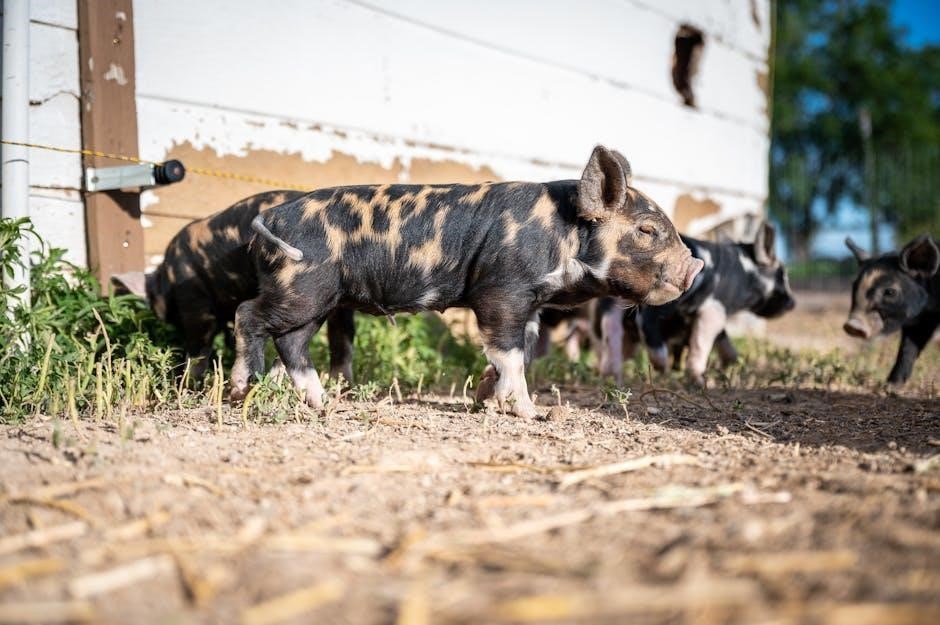
The PDF version of “The Story of the Three Little Pigs” is a valuable educational resource, often used in classrooms to teach moral lessons and promote early literacy. Its clear text and engaging format make it ideal for reading aloud to students. Teachers can use it to discuss themes like hard work, preparation, and consequences of actions. The story also helps develop critical thinking skills, as children analyze the pigs’ choices. Additionally, the PDF can include interactive elements like discussion guides or comprehension exercises, enhancing its educational value for both students and educators.
7.3 Visual Enhancements
The PDF version of “The Story of the Three Little Pigs” often features vibrant illustrations that bring the story to life. High-quality images of the pigs, their houses, and the wolf captivate young readers, making the tale more engaging. The visuals help children visualize the characters and settings, enhancing their understanding. Colorful graphics and expressive character designs make the story immersive, while detailed scenes of the houses highlight the differences between straw, stick, and brick constructions. These visual elements make the PDF a compelling choice for storytelling and learning.
The “Story of the Three Little Pigs” PDF is a timeless tale offering moral lessons and entertainment. Its accessibility enhances learning and storytelling experiences for all ages.
8.1 Final Thoughts
The “Story of the Three Little Pigs” PDF remains a beloved and enduring tale, offering timeless moral lessons. Its accessibility in digital format ensures it reaches a global audience, preserving its cultural significance. The story’s themes of hard work, preparation, and unity continue to resonate with readers of all ages. The PDF version enhances storytelling with visuals and ease of sharing, making it a valuable resource for parents, educators, and children alike. It serves as both entertainment and a tool for teaching life lessons, ensuring its relevance for future generations.
8.2 How to Download and Share
Downloading and sharing “The Story of the Three Little Pigs” PDF is straightforward. Visit reputable sources like official websites, e-book platforms, or educational sites. Look for a download button, select the desired format, and complete the download. To share, use email, social media, or cloud storage services such as Google Drive or Dropbox. Ensure you have the right to share the file to comply with copyright laws. This accessibility makes the story easily distributable for educational or personal use.

